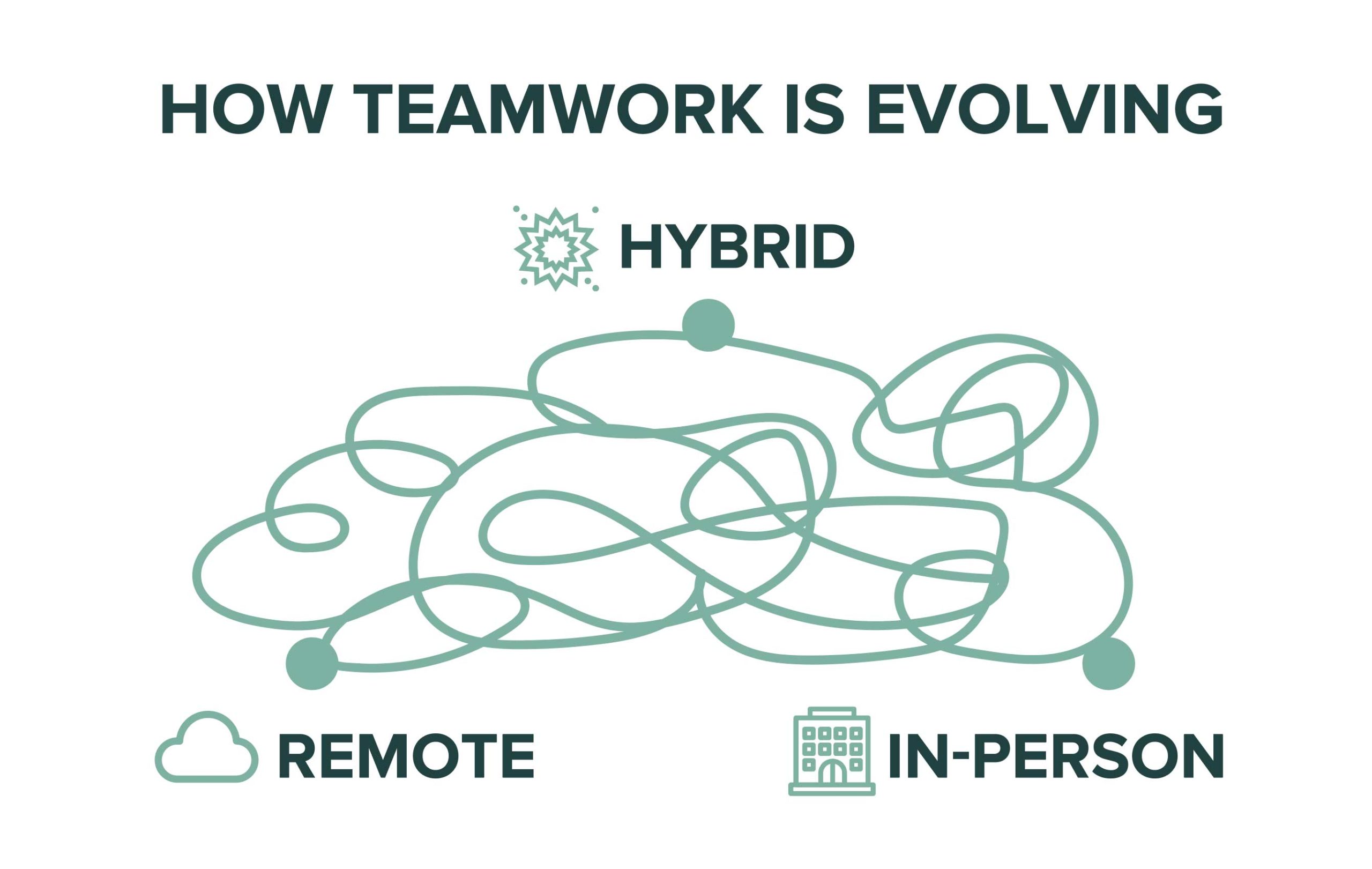
The future of teamwork for organizations is: kind of messy.
It’s more complicated than where we work…it’s about how we team, and how we manage the healthy tension between autonomy/independence (I want to work my way) and collaboration/interdependence (where organizations harness the collective magic).
Some gradation of hybrid is emerging as the future of teaming, yet what works for a digital start-up is not going to work for a cancer research lab because the variety of teams and jobs within them vary. So, what does hybrid mean for your team? Break out of the noise of either/or and break through to both/and. It’s a false choice to argue about a right way or a wrong way to work because there is no one type of TEAM in the world. Even in our remote-first organization, our team likes offsites that are actually “onsite” because we want to harness some of that side-by-side working that gives newer employees access to tacit knowledge*. As you evolve collaboration norms for your team, first ask yourself, “How do we harness the best of both worlds for my team?” And then the trickier part is designing for what they need now with an eye toward how it might change. How are you building into the culture that what hybrid “is” will be iterative, a learning journey/experiment, and will keep evolving? Because, as you remember that pesky status quo bias, as much as we say we like change, our brains prefer that things stay the same. Change is exhausting. It’s not laziness. It’s neuroscience.
When Was The Last Time You Asked These Questions…
Every situation has its bright elements and its shadow side. Here are a handful of questions to optimize the upside and minimize the challenges. What would you add?
Overall Questions for All Teams:
- How will we manage the tension of working anytime vs. working all the time?
- What kind of work is best done synchronously? (and with that list, what parts are done remote vs. in person and use questions below for each)
Questions for Remote Teams:
- When are remote synchronous work hours or meetings ideal? (And think through the why…)
- What works best about in-person collaboration, and how can you replicate it virtually?
- How might you harness more tacit knowledge?*
- How can you design for inclusion and belonging in daily, weekly, monthly ways?
Questions for Hybrid Teams:
- Do you have the right people together on the right days? (and how will you know?)
- How do you design for the differences of inclusion and belonging in a mixed environment?
- How do you explicitly avoid “proximity bias”?
- How might you explicitly harness tacit knowledge sharing when teams are together?
Questions for On-Site Teams:
- How might the scheduling of work hours offer some flexibility to onsite team members?
- How do you intentionally harness the inclusion elements that are being felt by quieter voices in remote environments and better tackle the challenge of microaggressions?
- What are creative ways to help team members optimize their time or cost in commuting?
- How might you celebrate what being together offers in a cadence that feels authentic and energizing? (e.g. tacit knowledge can be gained!)
*Quick aside and refresher: “tacit knowledge” is the wisdom and skills people pick up simply by being in the same room working with one another. It’s one of those things we tend to forget about and is challenging to duplicate online. Consider how you can carve out time for it no matter how you structure your team.
Now, Steal The Best And Leave The Rest
Once you’ve identified the bright spots and shadow sides of each way of working, take those ideas and figure out how to incorporate them into your team. Throw out ideas and see what works. Which brings us to the next part….
Revisit Your Strategies
We do this at Forshay a lot. What is still working (and what is meh)? Have the needs changed? For example, before Covid, we didn’t have as many meetings. At this point in Covid, we find ourselves getting together (virtual meetings and in-person, outdoor gatherings) more often. Our needs are shifting, and we want more connection to recharge around our goals and mission together.
Every few months (or whatever cadence makes sense for your team–we do it every 3-6 months), take some time to check in and see how it’s going for your team. Do you need to change something up?? Add an audio call (ideally a “walk and talk”!)? Get rid of a meeting? Rarely do things stay the same, as you know. Especially in a growth phase, team needs change quickly. Take the pulse and adjust accordingly. It’s a beautiful way to spend your time, and your team members likely have more than a few ideas. Our job as leaders is to create the space for them to be heard and to ask questions that steer us forward.
Harness the Best of Both Worlds
There isn’t a single answer. There are only the answers that work for you and your teams. So, go ask the important questions, and keep learning from there. Go Team!






